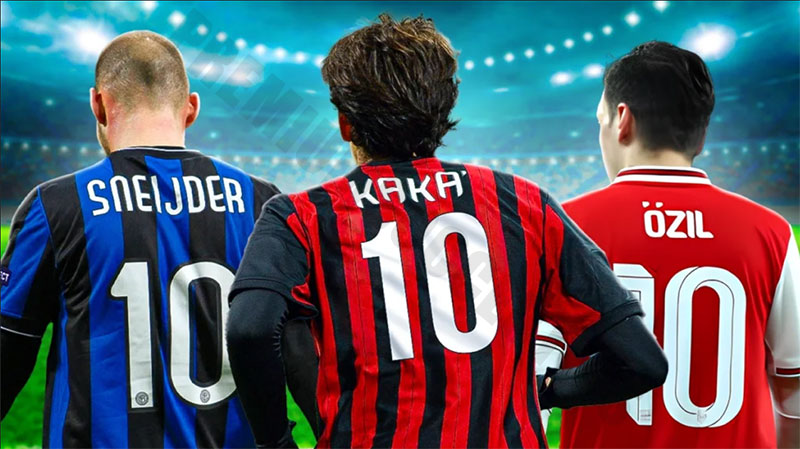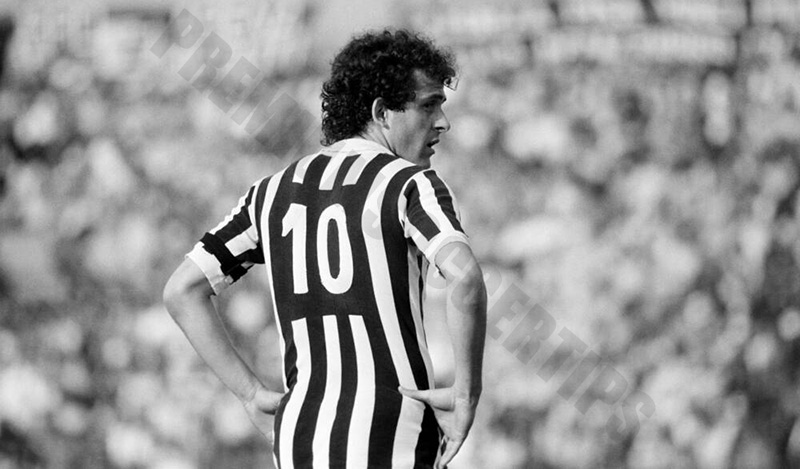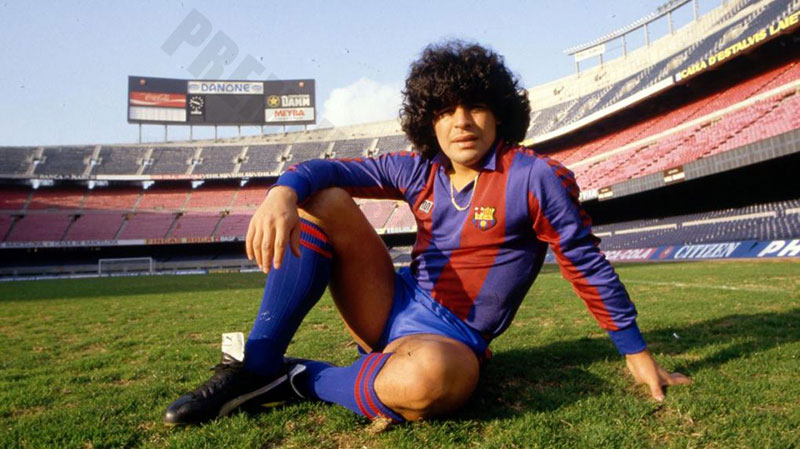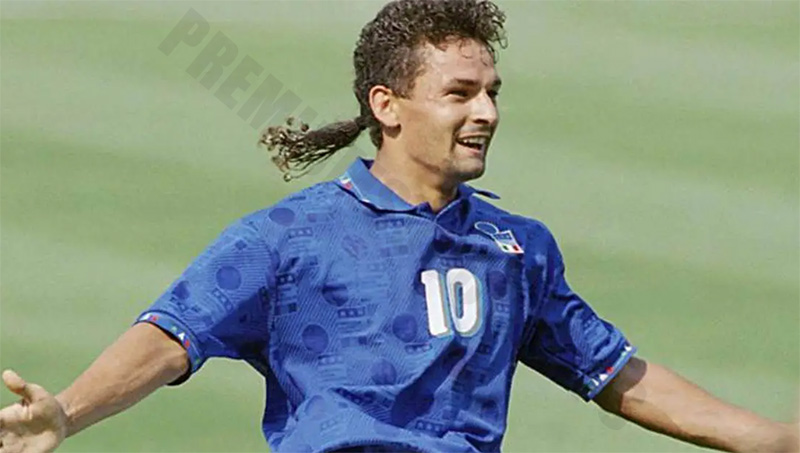What is the number 10 role in football?
Shirt numbers were first introduced into professional football in the late 1920s, although it wasn’t until the 1954 World Cup that players wore the same number for the entire duration of the tournament. After that, the traditional system, which went from 1 for goalkeepers to 11 for left midfielders or wingers (traditionally speaking) gradually became the norm. In the decades since, certain shirt numbers have developed a degree of cultural significance, and we’ve come to associate different numbers with different skills and responsibilities. Perhaps the most alluring and widely mythologised shirt number is the number 10. Not only delineating a rough area of the pitch, but also a unique creative role within the team, it’s a number that holds a lot of significance for many fans and players around the world. In this article, Premiumsoccertips will explain what is the number 10 role in football.
What is the number 10 in Soccer?
Over the years, attacking midfielders have been called by many different names. In Italy, the role of “trequartista” describes players who operate between the midfield and attack lines, while Germany’s Thomas Muller coined the term “raumdeuter” (space explorer) to describe his role at Bayern Munich. Both are associated with the Number 10 position in soccer.
The Number 10 is primarily an attacking player, playing in the space between the midfield and attack lines, similar to the trequartista. However, the role is called by different names in different countries. In Argentina, for example, the Number 10 is called the “enganche”, which means “hook”.

The role became important in the 1980s, when players such as Diego Maradona and Michel Platini highlighted the importance of a creative player in a flexible position behind the striker. The No. 10 often links the midfielders, strikers and wingers by moving between spaces.
Although usually playing behind a central striker in a 4-4-1-1, the No. 10 can also operate behind a pair of strikers in a 4-3-1-2. This position requires versatility and attacking freedom to bring out the player’s creativity.
What is the role of a number 10 in football?
As mentioned, technical quality is vital for any Number 10. These central attacking midfielders must be able to receive the ball in tight spaces, control the ball well and move quickly when in possession, displaying excellent agility and movement. However, that is only the foundation.
To effectively link up the midfield and attack, Number 10s need to move intelligently, finding space to make through passes, one-twos, triangular passes or dribbling forward into dangerous areas. The pressure from defenders will be constant, so they must maintain their dribbling, passing and combination skills even when being closely marked.

In modern football, in addition to their creative responsibilities, Number 10s also have defensive duties. They are constantly required to press the opposition defence, press the centre-backs and full-backs, and be able to win the ball back in the opposition half (part of the gegenpressing philosophy).
The No. 10 also has to help defend, intercept the ball and prevent passes into the centre of the pitch. They also need to be on the move, creating space for their teammates and making runs into the final third to support the attack. Although they are primarily a central player, the No. 10 will often move out wide to support the midfielders and full-backs.
Why is number 10 special in football?
There is a level of mythology and magic surrounding this shirt number that can be said to be impossible to replicate in any other position. When a footballer wears the number 10 shirt, it instantly marks them out as the main creator for their team. They will typically be the most technically proficient and creative player on the pitch, and with that level of talent comes great responsibility and pressure.
Number 10 players are expected to create something; and time and time again, they deliver. These attacking midfielders are known for their ability to deliver an accurate pass to a striker, or to strike a beautiful free-kick into the top corner of the net, just when their team needs it.
Some of the greatest footballers have ever played in this position and as such, the number 10 shirt holds a special place in the hearts and minds of football fans.
For accurate predictions and strategies, make sure to follow reliable bet football tips before placing your wagers
Top number 10 football players
Some of the greatest players to ever grace the football pitch have done so by wearing this famous number on the back of their shirts. To better understand the role of the number 10 in their teams, it is useful to look at some of the best players to have played the position.
Michel Platini
Long before he became a high-ranking football administrator — Platini served as UEFA president before being banned from football in 2015 for ethics violations — legendary French footballer Michel Platini showed the world why many fans believe the best footballers wear the number 10 shirt.

Winning the prestigious Ballon d’Or award three times in a row in 1983, 1984 and 1985, Platini was known as an intelligent, graceful player whose excellent passing ability, excellent vision, excellent dribbling skills and proficiency at set pieces more than made up for his lack of exceptional physical attributes.
Diego Maradona
Argentine legend Diego Maradona’s mark on the global game is perhaps greater than any other player. As well as winning trophies such as the FIFA World Cup, UEFA Cup and Serie A and pioneering skills such as the Maradona turn, Maradona also made fans around the world go crazy for him in a way that few players have.

This was not only due to his extraordinary dribbling skills, magical footwork, superb passing and efficiency in front of goal, but also to his unique personality.
The Napoli, Boca Juniors and Argentinos Juniors legend has iconic status in the game and a large part of that was as a pioneer of the No. 10 position.
Roberto Baggio
Known as Il Divin Codino (“The Divine Ponytail”) for his bizarre yet iconic hairstyle, Roberto Baggio was a true Italian football great.
Playing for a number of Serie A clubs including Juventus, Inter and AC Milan during the 1980s and 1990s, he became renowned as a technically gifted player, capable of scoring spectacular goals with volleys or chipping in, as well as being a playmaker and displaying creative vision, excellent passing and movement in the final third.

His goalscoring record is also notable – scoring 291 goals in 643 career appearances, he is Italy’s all-time top scorer at the World Cup with nine goals, and the only Italian to score at three World Cups.
Lionel Messi
We would be remiss if we did not include Argentina’s newest captain, Lionel Messi.
The Barcelona legend, who recently moved to the United States to enjoy his final playing days at Inter Miami, has followed in the footsteps of Diego Maradona, and in terms of pure footballing success, arguably surpassed him.

Messi’s exquisite passing, intelligent movement, beautiful first touch and consistent ability to shine when needed — scoring twice in the 2022 World Cup final and seven in the tournament — mean he is rightly entitled to be called perhaps the greatest No. 10 of all time, and arguably the greatest player in football history.
A few final words
In conclusion, the number 10 role in football represents much more than just a position on the field; it embodies creativity, vision, and responsibility. The Number 10 is often seen as the team’s primary playmaker, orchestrating attacks, making key passes, and linking midfield to attack. Whether referred to as a “trequartista” in Italy, “enganche” in Argentina, or “raumdeuter” in Germany, this role requires skill, versatility, and intelligence. Players like Diego Maradona, Michel Platini, and Lionel Messi have defined what is the number 10 role in football, showcasing the unique blend of technical brilliance and leadership that makes it one of the most coveted positions in the sport.
See more: Who scored the world cup first goal?








